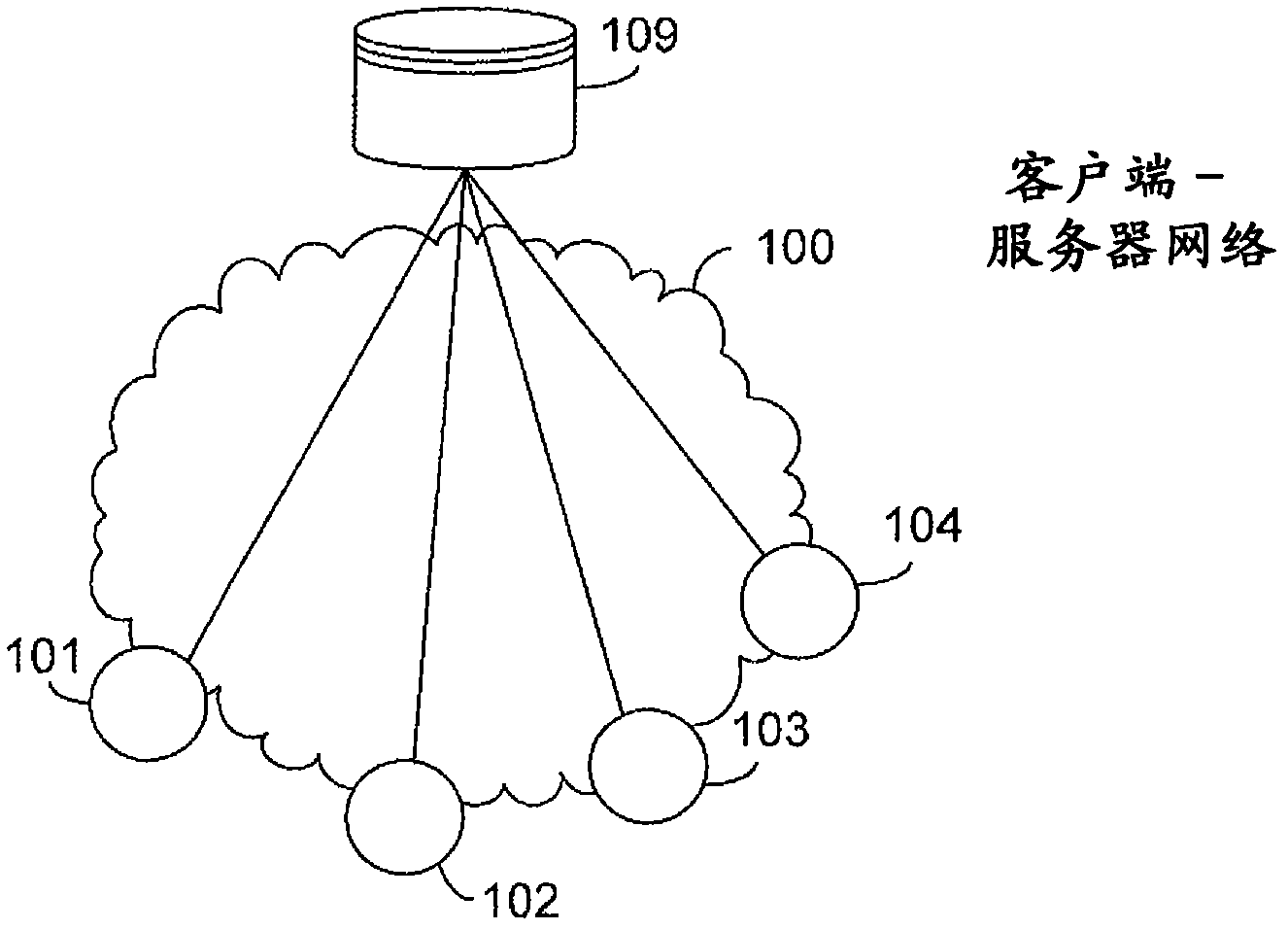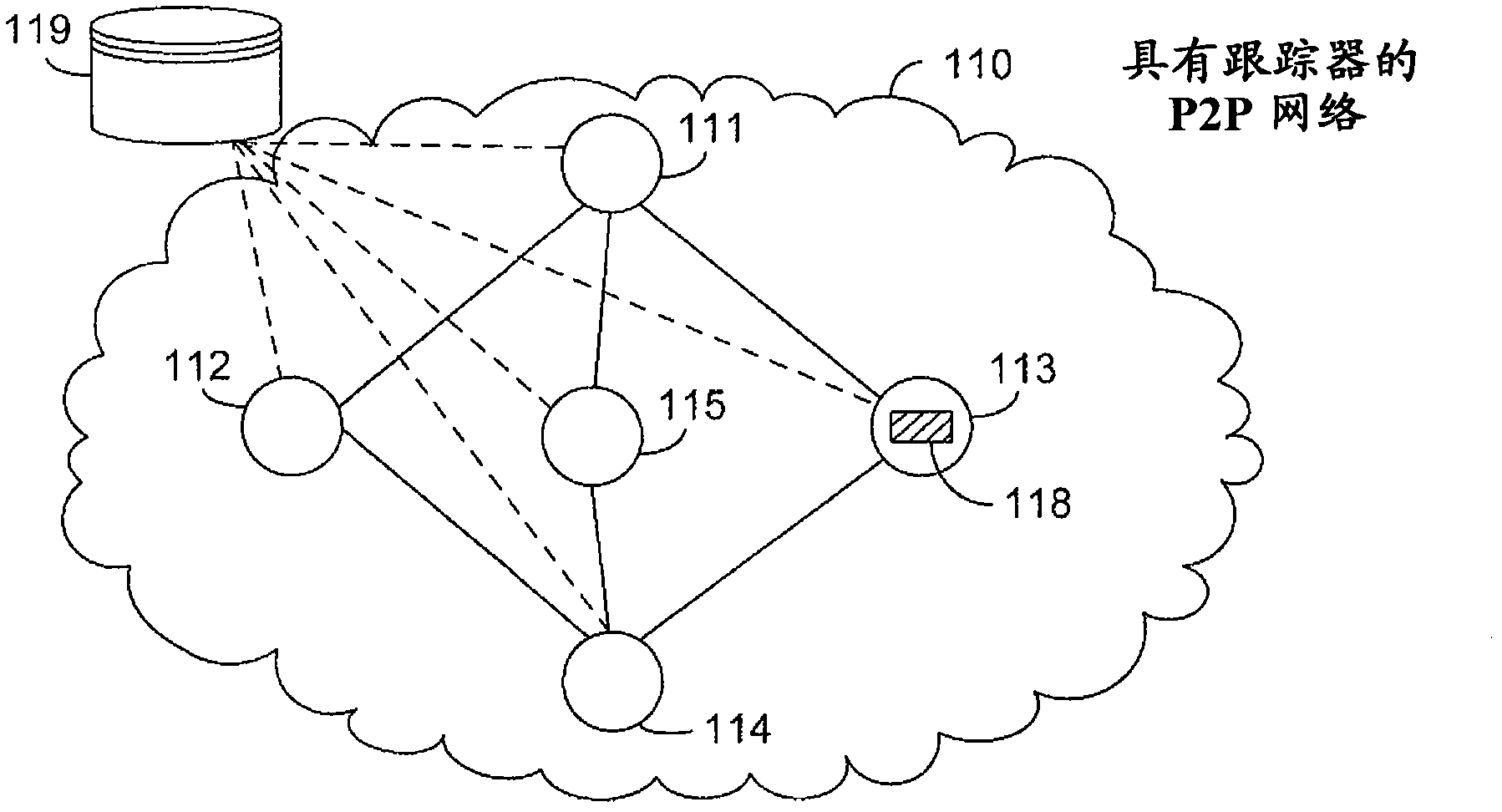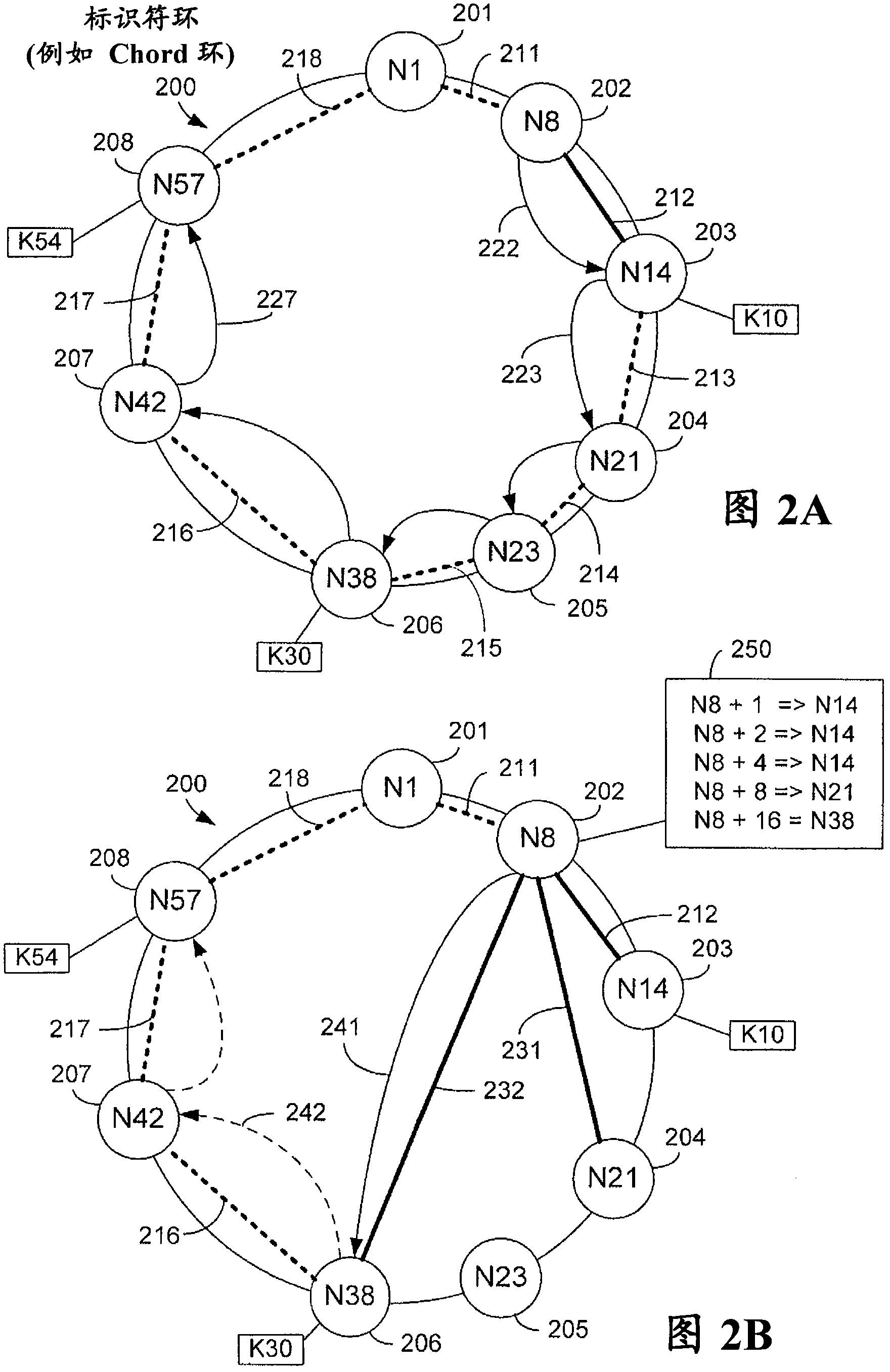Method and arrangement for locating services in a peer-to-peer network
A technology for service nodes and service objects, applied in electrical components, transmission systems, etc., to solve problems such as overloading
- Summary
- Abstract
- Description
- Claims
- Application Information
AI Technical Summary
Problems solved by technology
Method used
Image
Examples
Embodiment Construction
[0029] Traditionally, networks that store information or objects are configured as client-server networks. Figure 1A Such a network 100 is shown with a centralized server 109 to which a plurality of clients 101, 102, 103, 104 are connected. A typical example is a web server, which is accessible via the Internet from personal computers, mobile devices, etc. all over the world. The problem with a centralized server is that it's a single point of failure, and it needs to store a lot of information. on the other hand, Figure 1BA peer-to-peer (P2P) network 110 is shown. This network 110 includes a number of nodes (also called peers) 111-115 connected to each other. In this description, the terms node and peer are used equally. P2P network 110 is typically an overlay network (eg, the Internet) on top of a TCP / IP network. Each peer 111-115 can be both a client and a server at the same time. A centralized server for storing information or objects is not necessary, as the object...
PUM
 Login to View More
Login to View More Abstract
Description
Claims
Application Information
 Login to View More
Login to View More - R&D
- Intellectual Property
- Life Sciences
- Materials
- Tech Scout
- Unparalleled Data Quality
- Higher Quality Content
- 60% Fewer Hallucinations
Browse by: Latest US Patents, China's latest patents, Technical Efficacy Thesaurus, Application Domain, Technology Topic, Popular Technical Reports.
© 2025 PatSnap. All rights reserved.Legal|Privacy policy|Modern Slavery Act Transparency Statement|Sitemap|About US| Contact US: help@patsnap.com



